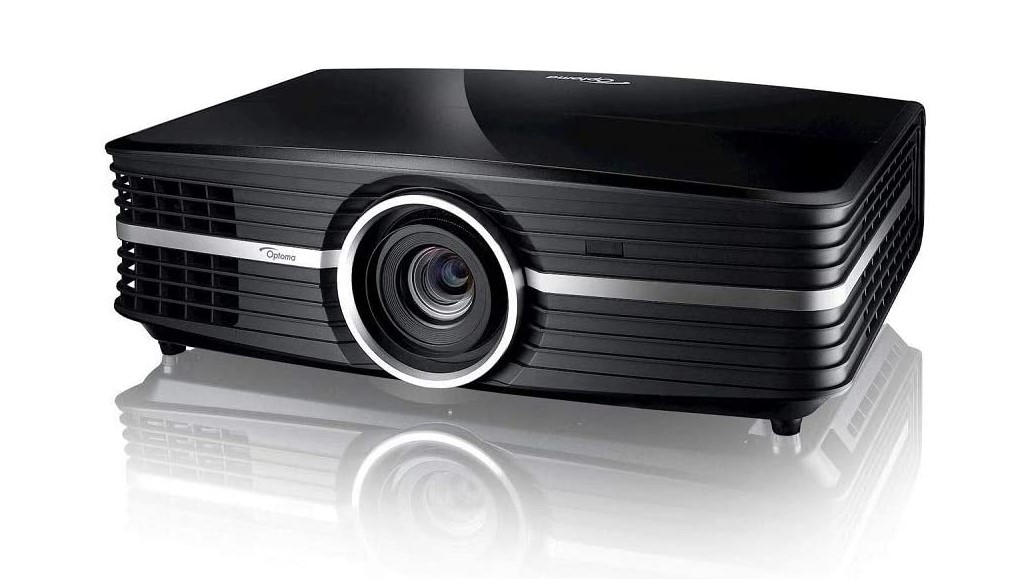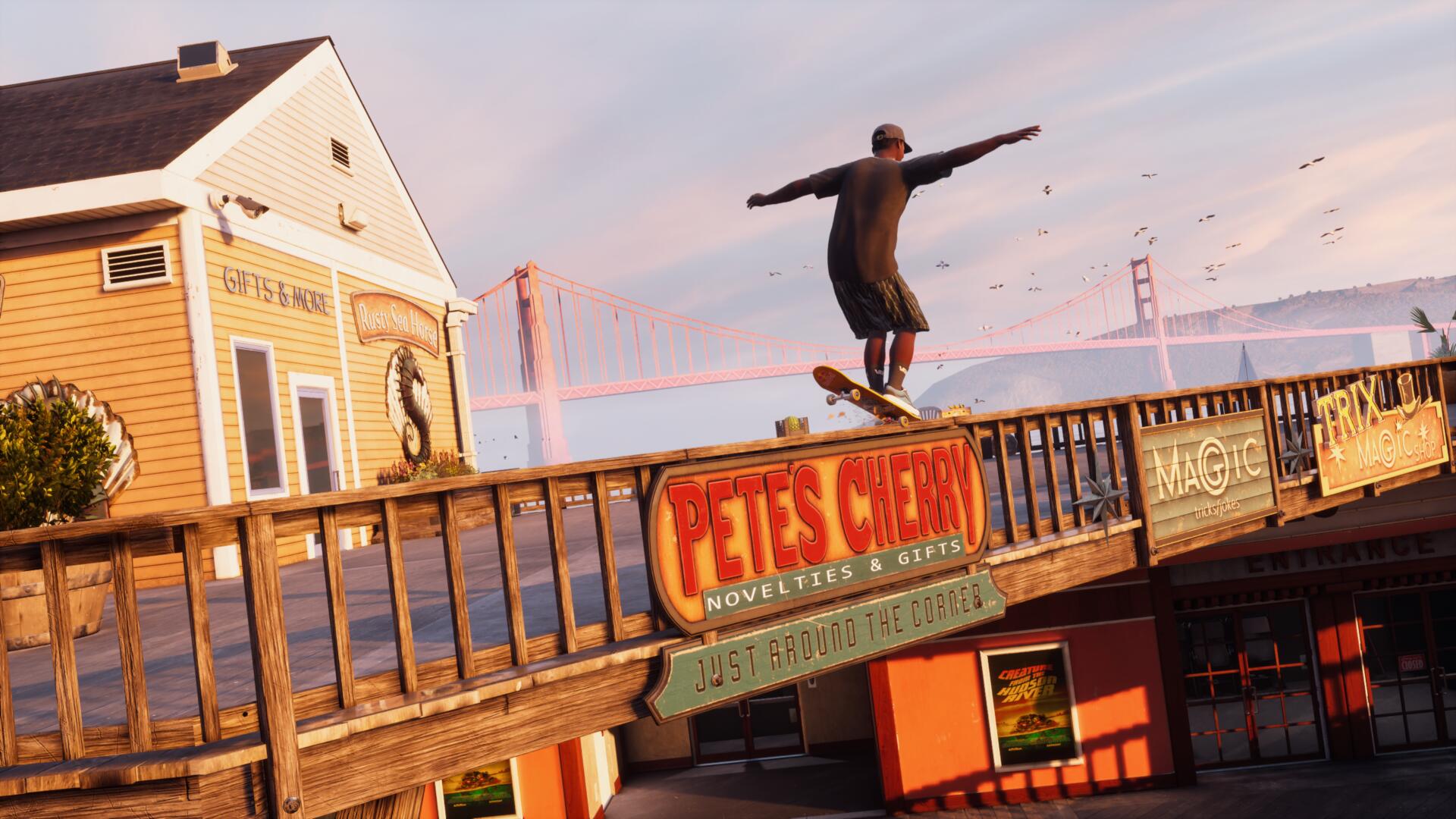GamesRadar+ Verdict
The Optoma UHD65 is a quality cinematic 4K projector that brings the big screen home.
Pros
- +
Sharp, cinematic picture quality
- +
Low operational noise
Cons
- -
Limited HDR performance
- -
One HDMI input is 4K capable
- -
Older so a little hard to come by
Why you can trust GamesRadar+
If you’re looking for a big-screen cinematic experience, the Optoma UHD65 is a great place to start. A single chip 4K DLP projector, it’s relatively compact (at 498(w) x 331(d) x 141(h)mm), so you can pop it on a shelf or coffee table for casual use, or ceiling mount if you want to partner with a screen.
And still, in 2022, it earns its place in the best projectors for gaming conversation.
Design & Features
Starting with the relentlessly-sensible stuff, the projector has two HDMI inputs, one of which is 4K capable, plus a VGA PC input. There’s also a USB power port, able to drive a streaming media stick, like the Amazon Fire TV. There are also digital audio and analog stereo outputs, and other connections include an RJ45, for control purposes only, and a 12v trigger - the latter is used to sync the projector with an electric projection screen. The projector is also bundled with a brightly backlit remote control.
To install the UHD65, you’ll need a throw distance of 3.5 metres to get an image 70-inches or greater. Focus and the 1.6x zoom are manually adjusted, and there’s lens shift available if you need to account for some geometric distortion. Although, oddly, you’ll need to remove the top half of the projector lid to get at the Lens Shift wheel. If you’re using the projector without a projector screen, there’s a helpful Wall Colour compensation filter, which allows you to maintain a sensible colour balance.
The UHD65 is built around Texas Instruments XPR (eXpanded Pixel Resolution) 0.67-inch DMD device. This uses fast switching to create a 4K image from 4.15 million mirrors. It’s partnered with an RGBRGB colour wheel. The rainbow effect, a characteristic of single-chip DLP projectors, is largely absent. I saw the odd colour flash, but it wasn’t too intrusive.
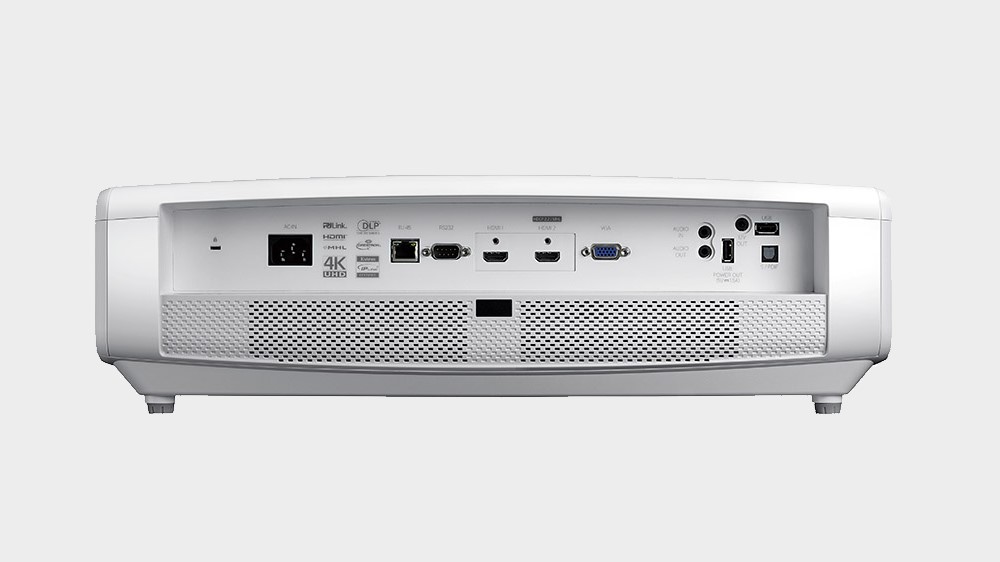
Brightness is rated at 2200 ANSI lumens, with contrast at 1,200,000:1. You’ll just about be able to get away with gaming in a room with some level of ambient light, but there’s no doubt that the projector is best viewed in a near-dark room.
There’s a dedicated Game preset, along with Cinema, Vivid, Reference, User, and Bright image modes. There are also Ultra Detail and Dynamic Black adjustments. The latter boosts peak luminance, but increases fan noise, while the former adds extra image processing lift.
As you might expect, there’s a modest sound system onboard, which might suffice if you want a quick gaming session. But offering just 4W from the built-in speaker, you might as well use it in tandem with a surround sound system.
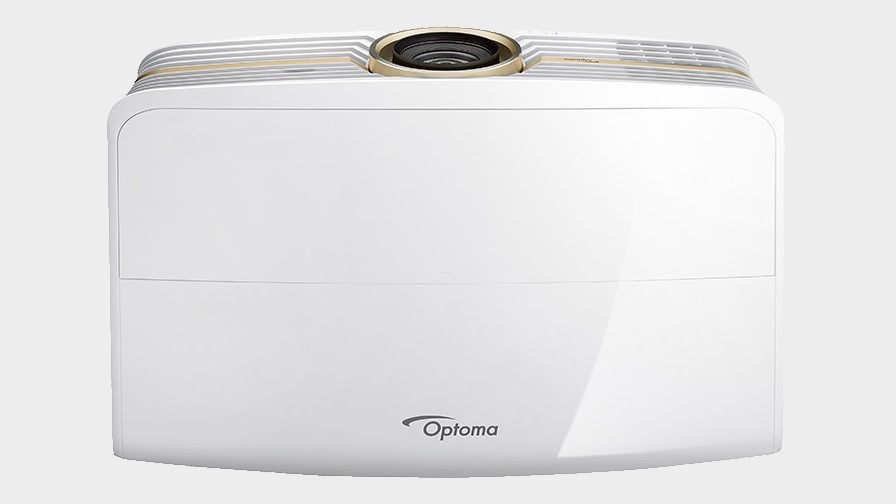
Performance
The image quality is excellent. 4K images look pleasantly sharp and textured, and colour vibrancy is high. This DLP projector doesn’t support wide colour, so it down-converts, but to compensate Optoma’s PureEngine processing does a fine job balancing contrast and colour vibrancy, while TI’s BrilliantColor process enhances overall colour intensity.
The projector is HDR-ready, but take this ability with a pinch of salt. Projectors can’t handle HDR the way a TV can; screens can illuminate specific areas of the screen, but a projector lamp doesn’t even come close to emulating that. The best you can hope for is an uplift to the average picture level, which the UHD65 just about manages.
There's also an SDR to HDR converter, but this faux HDR effect isn’t particularly appealing and should be avoided.
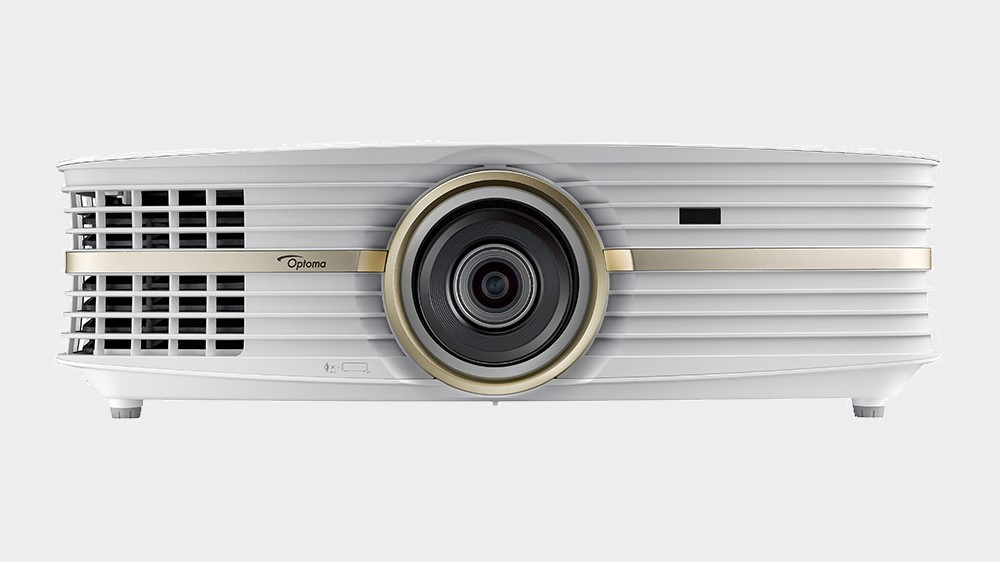
Overall - should you buy it?
If you’re after a 4K projector to give you a big-screen gaming experience, the UHD65 is well worth shortlisting. Its 2160p image clarity is outstanding, the model is compact and it's reassuringly quiet in operation.
If you are shopping for a more outdoorsy projector this summer, don't forget to browse the best outdoor projectors and the best outdoor projector screens.
Steve May is a home entertainment technology specialist. Creator of Home Cinema Choice magazine, Steve writes about gadgets and gizmos for GamesRadar, T3, Louder Sound, TechRadar, Home Cinema Choice and Yahoo. He’s also the editor of The Luxe Review and Pro AV site Inside CI. Steve once wrote a games column for legendary British comic 2000AD (and has a badge to prove it), and maintains that when it comes to top shooters, Doom is the GOAT.
